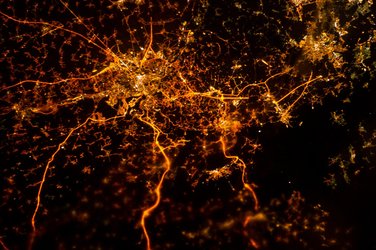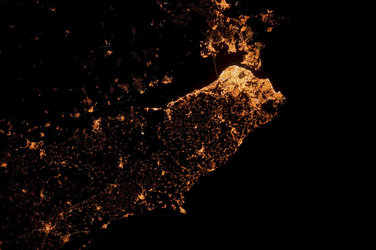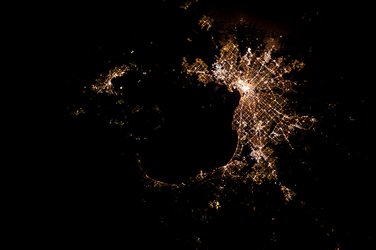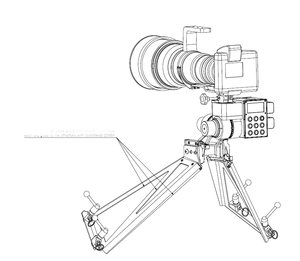Nightpod
Automated tripod
The Nightpod camera-stand tracks the movement of Earth passing under the International Space Station at 28 800 km/h, keeping any target fixed in the middle of the viewfinder. Standard cameras fixed to Nightpod can take pictures with longer exposure times so astronauts can take sharper pictures of cities at night.
Nightpod is installed in the Cupola observatory on the International Space Station. To calibrate the motors an astronaut enters the Space Station’s altitude, as well as its yaw, pitch and roll. These parameters change in orbit but are readily available to astronauts on the Space Station computers. After calibration, all the astronaut has to do is point the camera at the target, release the shutter and Nightpod will automatically compensate for the movement of the Station, keeping the subject steady in the camera’s viewfinder during its exposure time.

More functionality is available in ‘automatic mode’ where Nightpod takes multiple pictures of the same target while the Space Station flies over. By systematically taking similar pictures of the same area, the can be combined to build large-scale, high-resolution maps of Earth at night. Over time pictures of the same area will be taken in different lighting, increasing the quality of the maps and making them even more interesting for scientific research. Automatic mode moves the camera back and forth at the right time and speed requiring calibration only once in a while.
The end design consists of four parts: the structure’s ‘legs’ that fix to Cupola, an interface control box, the camera mount and the motors to move the camera over four axes. Testing was done at the Johnson Space Centre, USA, on a full-size mockup of the Cupola module. The package hitched a ride to the Space Station on Soyuz TMA-03 with ESA astronaut André Kuipers and Expedition 30/31.
All astronauts that visit the Space Station are trained to use Nightpod.
More reference material on Nightpod can be found in the ESA Erasmus Experiment Archive.
Material: Aerospace-grade aluminium
Design and manufacture: cosine, The Netherlands and Astrofein, Germany
Turning circle -20 to +20 degrees with around 50 cms movement
4-axis movement
Tracking accuracy: 7 Arcsec
Best ground resolution: 10 m/pixel
Tracking range: +/- 18 degrees















 Germany
Germany
 Austria
Austria
 Belgium
Belgium
 Denmark
Denmark
 Spain
Spain
 Estonia
Estonia
 Finland
Finland
 France
France
 Greece
Greece
 Hungary
Hungary
 Ireland
Ireland
 Italy
Italy
 Luxembourg
Luxembourg
 Norway
Norway
 The Netherlands
The Netherlands
 Poland
Poland
 Portugal
Portugal
 Czechia
Czechia
 Romania
Romania
 United Kingdom
United Kingdom
 Slovenia
Slovenia
 Sweden
Sweden
 Switzerland
Switzerland


































